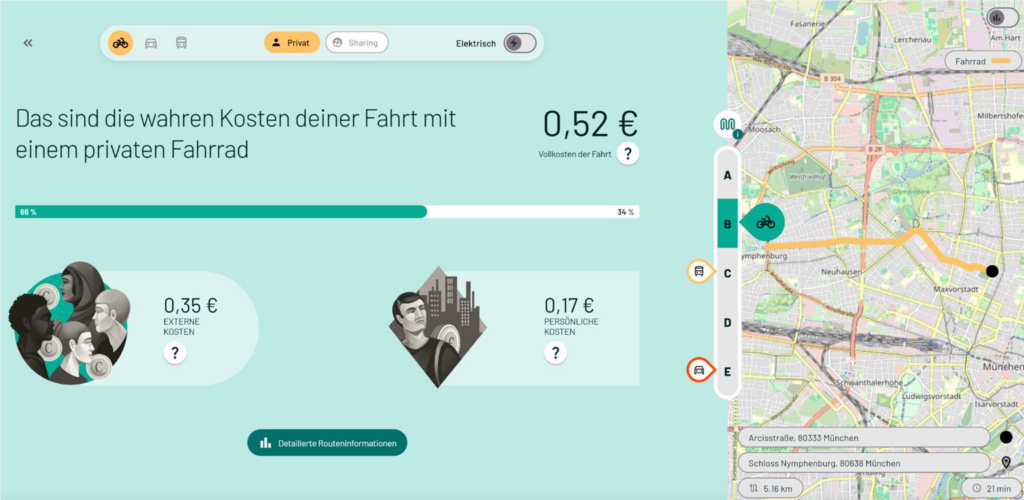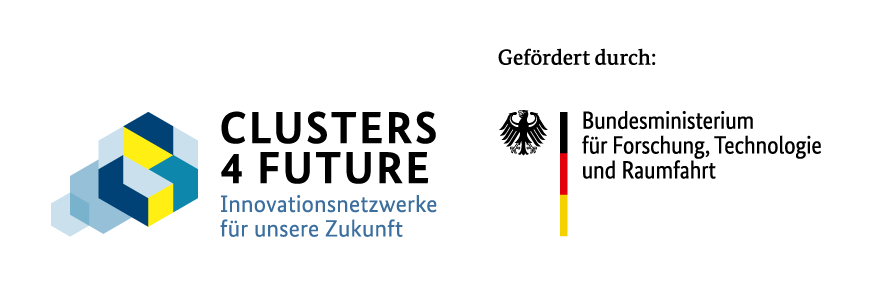We have worked on creating a full-cost perspective on urban transportation. In addition to air pollutants and climate damage, full costs also include accidents, congestion, land consumption and noise. As part of the project, innovative approaches were developed that make it possible to promote sustainable mobility behavior with the help of cost transparency, awareness-raising and planning and control elements.
A full-cost calculator was developed that is freely available online and provides evaluated mobility options for individual travel requests. To promote sustainable mobility behavior, scenarios for a holistic, dynamic pricing system based on full costs were also created. These scenarios are then examined in terms of their impact on accessibility and mobility behavior.
The qualitative assessment of the various mobility options in terms of their sustainability should enable planners and politicians to create price incentives for travelers to make their mobility behavior more sustainable - both in the short term (e.g. choice of means of transport) and in the long term (e.g. car ownership). For citizens, the difference between estimated or perceived effects and decisions on the choice of means of transport and the actual effects is shown, thus creating transparency.

Do you want to know the true price of your mobility?
We are very proud to finally present our full cost calculator!
The MCube innovation project SASIM has developed an online tool to make the full costs of our mobility visible.
Why? Up to now, we have only paid the personal (internal) costs for our mobility, such as fuel costs or public transport tickets. However, external costs such as noise pollution, air pollution and accident-related costs also play a major role.
These costs are not borne by the users, but by society.
Go try it out!!!
External costs tool: Simple cost calculator for transportation in rural communities
Our external cost tool enables municipalities to quickly and easily calculate the external costs of transportation caused by their residents. In addition, the effects of various mobility measures on the modal split and the external cost balance can be analyzed. The tool has been specially developed for rural municipalities in Bavaria that want to easily evaluate measures even without a calibrated transport model.
If you are interested in the tool, please contact sasim@mcube-cluster.de
Partners from science, business and the public sector brought their different perspectives together in an inter- and transdisciplinary research consortium.
No results available
Want to shape the future of mobility with us?
Then please get in touch with us.

What is MOSAIQ?
Imagine something: There is more space for people. The streets have more trees and plants. Everyone can get around better. That's how your Schwabing-West district could be in the future. How would you like your district to be? We want to talk to you about it!
The project is called MOSAIQ. MOSAIQ is a research∙project. MOSAIQ means: Mobility and urban climate in the future city∙part. The Technical University of Munich is leading the project.
What is MOSAIQ about?
MOSAIQ wants to make the streets in the city∙part more beautiful. People should feel comfortable there. There should be more space. For meetings and plants, for example. You can help decide what is tried out in the Stadt∙teil. The ideas come from you. Some ideas will be tried out on the streets for a certain period of time.
The aim of MOSAIQ is to make urban districts good places to live.
At the same time, the climate in the city should improve. And people should be able to move around the city easily.
What is happening in the district?